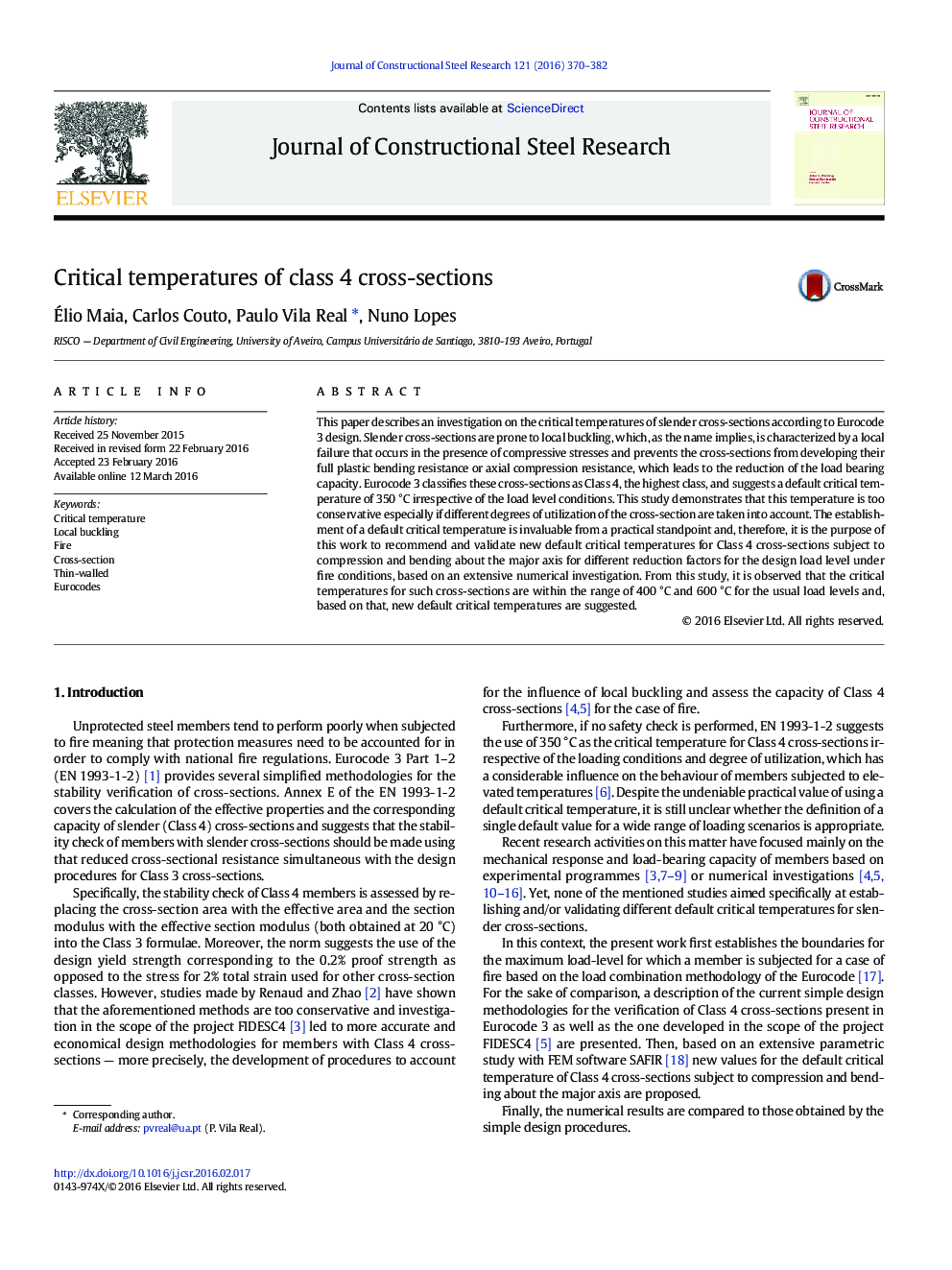| کد مقاله | کد نشریه | سال انتشار | مقاله انگلیسی | نسخه تمام متن |
|---|---|---|---|---|
| 284241 | 509133 | 2016 | 13 صفحه PDF | دانلود رایگان |
• Critical temperatures of slender I-shaped cross-sections are investigated in this work.
• Numerical parametric study considering several Class 4 cross-sections is performed.
• It is observed that Eurocode 3’s default critical temperature of 350 °C for Class 4 cross-sections is too conservative.
• The suggested minimum default critical temperature of 400 °C is more accurate and an improvement over the Eurocode 3.
• New default critical temperatures for Class 4 cross-sections are proposed for different reduction factors.
This paper describes an investigation on the critical temperatures of slender cross-sections according to Eurocode 3 design. Slender cross-sections are prone to local buckling, which, as the name implies, is characterized by a local failure that occurs in the presence of compressive stresses and prevents the cross-sections from developing their full plastic bending resistance or axial compression resistance, which leads to the reduction of the load bearing capacity. Eurocode 3 classifies these cross-sections as Class 4, the highest class, and suggests a default critical temperature of 350 °C irrespective of the load level conditions. This study demonstrates that this temperature is too conservative especially if different degrees of utilization of the cross-section are taken into account. The establishment of a default critical temperature is invaluable from a practical standpoint and, therefore, it is the purpose of this work to recommend and validate new default critical temperatures for Class 4 cross-sections subject to compression and bending about the major axis for different reduction factors for the design load level under fire conditions, based on an extensive numerical investigation. From this study, it is observed that the critical temperatures for such cross-sections are within the range of 400 °C and 600 °C for the usual load levels and, based on that, new default critical temperatures are suggested.
Journal: Journal of Constructional Steel Research - Volume 121, June 2016, Pages 370–382
